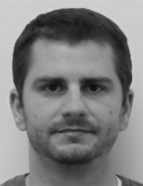Profile
-
OrganizationCenter for Free-Electron Laser Science
-
Telephone+49 (0)40 8998 6226
-
Address(s)Richard Kirian
Center for Free-Electron Laser Science
Building 99 Room 03.053
Hamburg, Germany 22761
-
Biography
Dr. Kirian earned his B.A. at U.C. Berkeley (astrophysics) in 2006 and his Ph.D. at Arizona State University (physics) in 2011. He began his Ph.D. work with Prof. John Spence in 2007 after a one-year post-baccalaureate fellowship at the Advanced Light Source in Berkeley, Ca, where he contributed to the construction and commissioning of a small-angle x-ray scattering beamline (7.3.3). He has been involved in the development of emerging bio-imaging techniques (crystallographic and non-crystallographic) at X-ray Free-Electron Laser (XFEL) facilities since the commissioning of the Linac Coherent Light Source in 2009. His Ph.D. work consisted of the development of novel algorithms for the analysis of Serial Femtosecond Crystallography (SFX) data and a series of investigations into the feasibility of determining macromolecular structures from intensity correlations that are unique to femtosecond solution scattering experiments. Following his Ph.D., he joined the team of Prof. Henry Chapman at the Center for Free-Electron Laser science (CFEL) in Hamburg, Germany, where he continued investigate topics related to his Ph.D. work along with new methods for delivering hydrated and aerosolized particles into the intense XFEL focus. Dr. Kirian continues to take part in a variety of XFEL experiments, and regularly contributes to the development of software (Cheetah and CrystFEL) and algorithms for analyzing diffraction data from XFELs. For example, he is presently pursuing a novel approach for solving the crystallographic phase problem for the case of protein microcrystals under femtosecond coherent illumination. He also pursues a variety of experimental sample-delivery strategies such as pulsed and fast-moving liquid jets for high-repetition-rate XFELs, highly focused aerosol particle streams, and the use of optical forces for controlling the trajectories of aerosolized particles.
-
Interests




